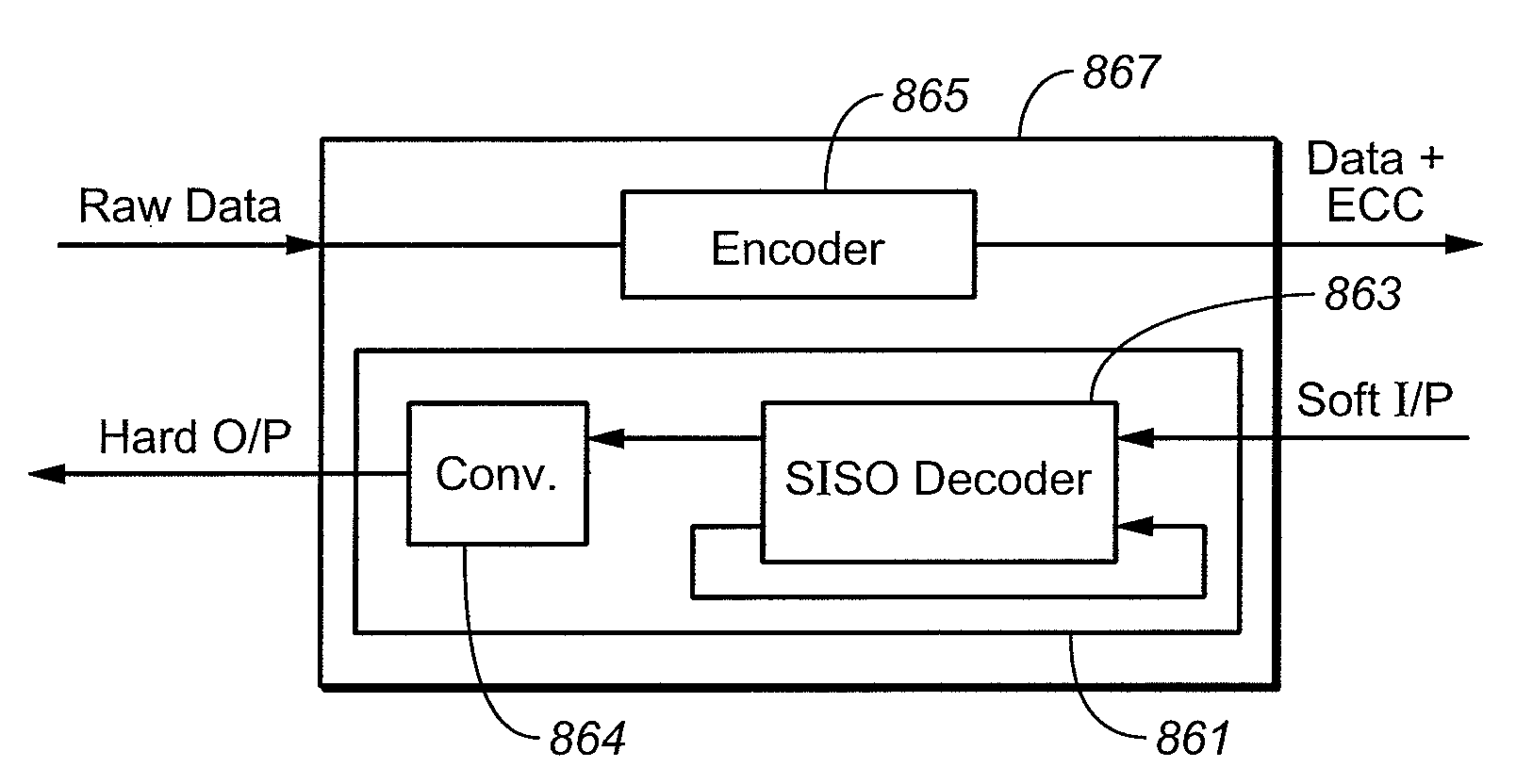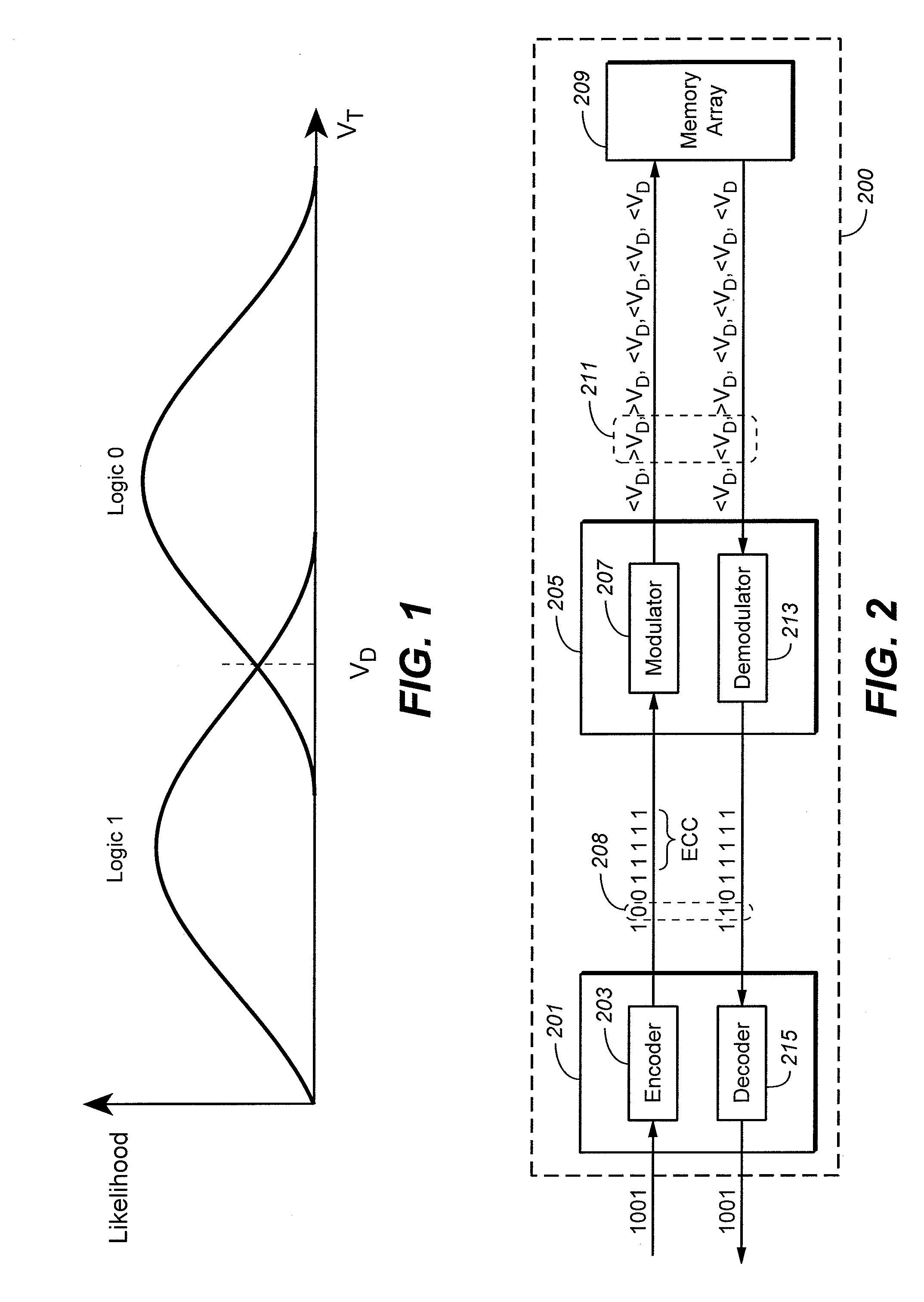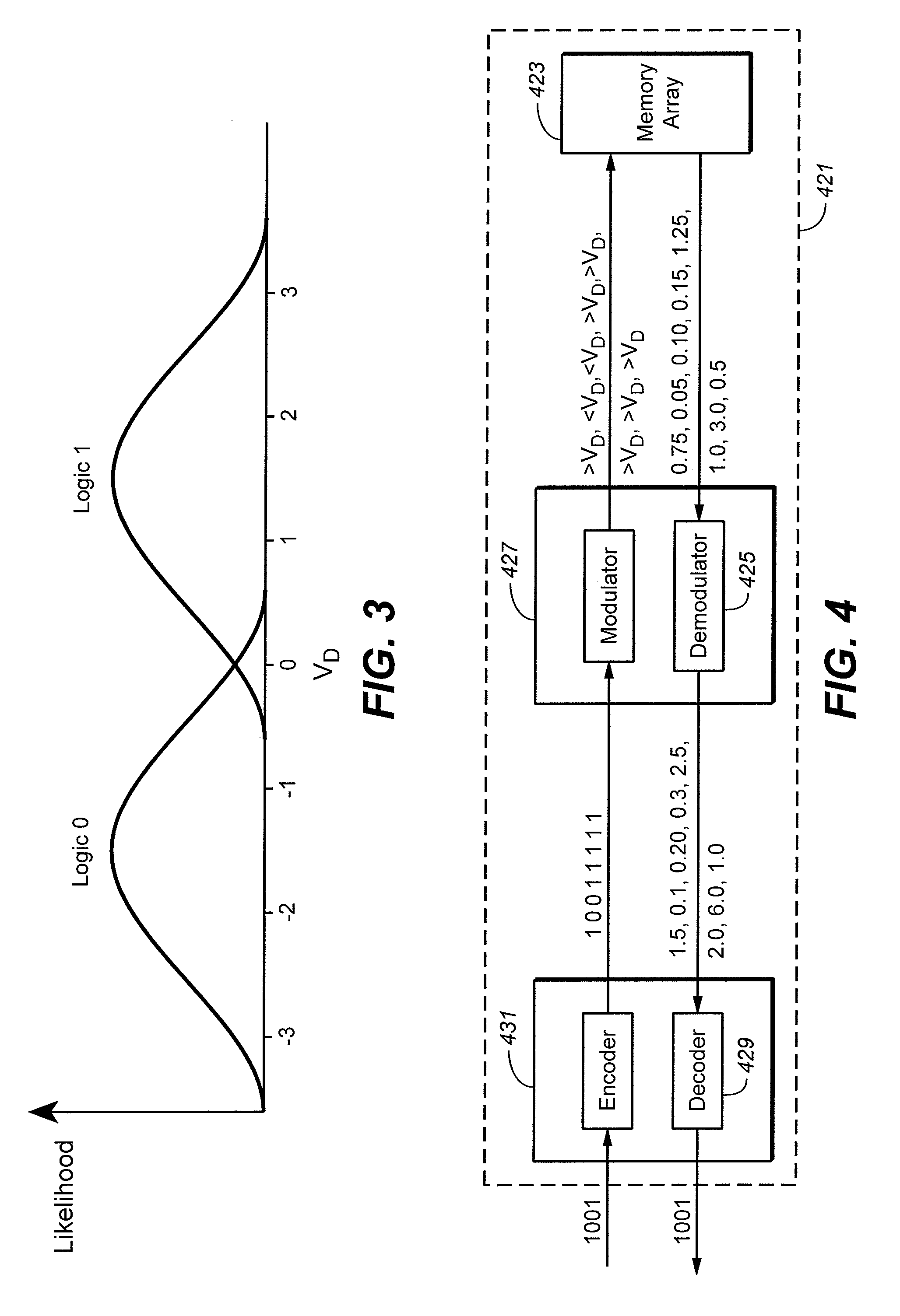Soft-Input Soft-Output Decoder for Nonvolatile Memory
a nonvolatile memory and decoder technology, applied in the field of nonvolatile memory systems, can solve the problems of increasing computational complexity in reconstructing data, data stored in nonvolatile memory systems may contain erroneous bits, and may change the parity of groups of bits, so as to achieve high resolution and higher read density
- Summary
- Abstract
- Description
- Claims
- Application Information
AI Technical Summary
Benefits of technology
Problems solved by technology
Method used
Image
Examples
Embodiment Construction
[0030]In many nonvolatile memories, data read from a memory array may have errors. That is, individual bits of input data that are programmed to a memory array may later be read as being in a different logical value. FIG. 1 shows the relationship between a physical parameter indicating a memory cell state (threshold voltage, VT) and the logical values to which the memory cell may be programmed. In this example, only two states are stored in the cell. Thus, the cell stores one bit of data. Cells programmed to the logic 0 state generally have a higher threshold voltage than cells in the logic 1 (unprogrammed) state. In an alternative scheme, the logic 1 state is the unprogrammed state of the memory cell. The vertical axis of FIG. 1 indicates the likelihood of reading a cell at any particular threshold voltage based upon expected threshold voltage distribution. A first likelihood function is shown for cells programmed to logic 1 and a second for cells programmed to logic 0. However, th...
PUM
 Login to View More
Login to View More Abstract
Description
Claims
Application Information
 Login to View More
Login to View More - R&D
- Intellectual Property
- Life Sciences
- Materials
- Tech Scout
- Unparalleled Data Quality
- Higher Quality Content
- 60% Fewer Hallucinations
Browse by: Latest US Patents, China's latest patents, Technical Efficacy Thesaurus, Application Domain, Technology Topic, Popular Technical Reports.
© 2025 PatSnap. All rights reserved.Legal|Privacy policy|Modern Slavery Act Transparency Statement|Sitemap|About US| Contact US: help@patsnap.com



